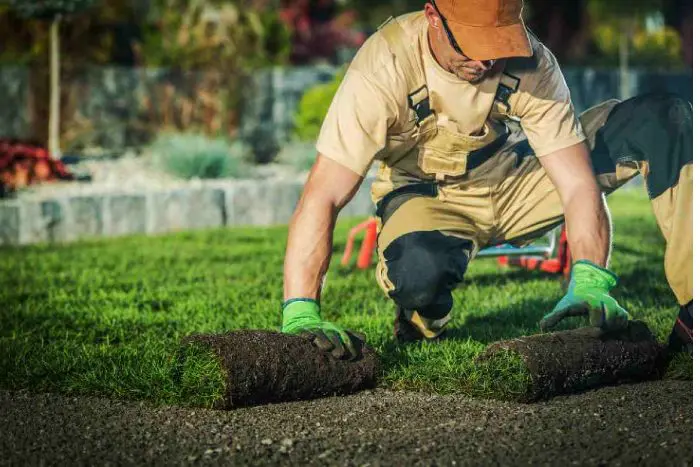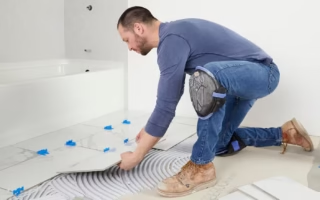You’ve finally cut down that old tree, cleaned the debris, and maybe even laid down new seeds — yet the grass still refuses to grow. The patch around where the tree once stood remains bare and stubbornly brown, no matter how much watering or fertilizer you use.
The culprit? It’s often the leftover stump and roots hidden beneath the surface. While the tree may be gone, its underground system is still alive, drawing nutrients, altering soil balance, and blocking your lawn’s recovery.
Understanding how these buried remains affect your grass is the key to bringing your yard back to life.
The Hidden Impact of a Tree Stump
The Root System Doesn’t Die Overnight
When a tree is cut down, the roots connected to the stump continue living for years. They stay active underground, pulling moisture and nutrients from the soil that your grass desperately needs. Even though the surface looks calm, the underground competition keeps your new grass weak and patchy.
Decaying Wood Changes Soil Chemistry
As the stump and roots begin to rot, they release substances that alter the soil’s pH balance. This process increases the soil’s acidity, making it harder for grass seeds to germinate. You might notice that even weeds struggle to grow near the old tree base — a clear sign the soil isn’t healthy.
Fungus and Pests Take Over
Rotting stumps attract fungi, termites, ants, and beetles, which can spread to other parts of your lawn. These pests not only damage nearby roots but also break down organic matter unevenly, leading to dry spots and inconsistent soil texture. Over time, this makes grass growth nearly impossible in those areas.
Why Stump Removal Matters
Stumps Block Root Expansion
Grass roots need space to spread evenly and access nutrients. A stump, even one ground down to the surface, still has a dense wood mass below that restricts air and water flow. Without proper removal, that hidden blockage acts like a barrier between your new grass and the soil it needs to thrive.
Moisture Retention Problems
Leftover roots often absorb and trap excess water, creating damp, compacted zones under your lawn. These waterlogged pockets prevent new grass roots from developing properly. In other cases, the opposite happens — the decaying wood drains moisture too quickly, leaving the soil too dry.
Nutrient Imbalance
Tree roots and stumps continue consuming nitrogen and key nutrients long after the tree’s removal. As the wood decomposes, it takes up even more nitrogen, starving your grass. This is why even well-fertilized lawns sometimes show yellowing or thinning in the area where the stump was.
The Right Way to Restore Your Lawn
Remove the Stump Completely
The most effective solution is complete stump removal, not just surface grinding. Removing all remaining wood and major roots eliminates underground competition and creates fresh soil space for your grass to take root. A clean soil bed gives your lawn a healthy foundation to regrow evenly.
Recondition the Soil
After stump removal, the soil beneath is often depleted and compacted. Loosen it up with a garden tiller and mix in compost or topsoil rich in organic matter. This restores essential nutrients and balances pH levels, making the area fertile again.
Adding a thin layer of slow-release fertilizer can help jump-start growth, especially if decomposition has stripped nitrogen from the soil.
Seed Strategically and Water Correctly
Choose a grass type that matches your region’s sunlight and moisture levels. Spread seed evenly, cover lightly with soil, and keep the area moist for the first few weeks. Avoid overwatering — excess moisture can make the soil soggy again, especially if roots weren’t removed deeply enough.
Common Mistakes That Keep Grass from Growing
Leaving Root Fragments Behind
Even small root pieces left underground can regrow as suckers or shoots, competing with grass for nutrients. If you notice random sprouts emerging, it’s likely leftover roots still trying to survive. A second soil tilling often fixes this issue.
Using Quick-Fix Chemicals
Some people use chemical stump removers or soil sterilizers to speed up decomposition, but these products can damage surrounding soil. The residual chemicals stay in the ground, harming new grass and nearby plants for months.
Ignoring Sunlight and Drainage
When trees are removed, the shade and soil drainage patterns in that area change. The exposed patch may dry out faster or become more compacted from sunlight. Adjust your watering and soil care routine based on the new conditions.
How Long Recovery Really Takes
Short-Term Expectations
Even after full stump removal, it can take a few months for soil health to return to normal. The deeper the roots, the longer the recovery. Regular fertilization, watering, and reseeding help speed the process.
Long-Term Lawn Restoration
By the next growing season, most lawns recover fully if maintained correctly. Reapplying compost or organic mulch once or twice a year improves soil structure and encourages steady grass growth.
Patience is key — the goal isn’t instant greenery but long-term soil balance. Once that’s achieved, your grass will grow thick and vibrant.
How to Prevent Future Problems
Fill and Level the Ground
After the stump is gone, fill the hole with a mix of topsoil and sand to ensure even drainage. Level the area so rainwater doesn’t pool around it, preventing future soft spots or fungal buildup.
Regular Aeration and Maintenance
Aerate your lawn at least once a year. This promotes airflow and breaks up compacted soil caused by old root systems. Regular mowing and light overseeding help maintain consistency across your lawn.
Keep an Eye Out for Regrowth
Some trees, like maple, poplar, or willow, have aggressive roots that can try to regenerate. If you spot new shoots or small saplings, remove them immediately before they establish.
Conclusion
It’s frustrating when your lawn refuses to recover after tree removal, but understanding the hidden impact of a tree stump is half the battle. That leftover wood and root network silently changes the soil, drains nutrients, and blocks your grass from thriving.
By taking the time to remove the stump, refresh the soil, and reseed properly, you restore your lawn’s natural balance. In just one growing season, the once-bare patch can become a lush green space again — proof that the health of your yard depends as much on what’s underground as what’s on the surface.
A beautiful lawn isn’t just about mowing and watering — it starts with giving the grass room to breathe, grow, and reclaim its space. And sometimes, that means finally saying goodbye to what’s left of the tree that once stood there.
Do Read: How 3D Design, Drones, and Smart Sensors Are Re-Shaping Outdoor Living




